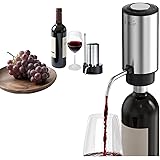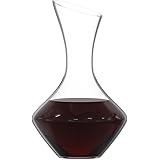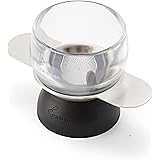Have you ever dreamed of crafting your own wine, but found the idea a bit intimidating? Perhaps a vision of elaborate equipment and complex processes has kept you from taking the plunge. The journey into home winemaking can seem daunting, yet it is often simplified by starting with a comprehensive kit. The video above offers an exciting look at the Home Brew Ohio One-Gallon Wine Kit, specifically designed to make the initial steps accessible for aspiring vintners. This unboxing review highlights the components included and offers a practical perspective on what is provided for newcomers to the hobby.
Starting Your Home Winemaking Journey with a One-Gallon Wine Kit
For many enthusiasts, the prospect of producing wine at home begins with a modest investment. A one-gallon wine kit is frequently recommended for those who are new to winemaking, as it offers an economical and manageable introduction to the process. This smaller scale allows for experimentation without committing to large batches, which can be particularly beneficial if one is still learning the nuances of fermentation.
Why a One-Gallon Kit is Ideal for Beginners
The compact size of a one-gallon kit addresses several common concerns for novices. Space requirements are minimal, allowing for fermentation in various household settings, from a kitchen counter to a small pantry. Additionally, the investment in ingredients and equipment is significantly less than that for larger, five-gallon batches. This lower entry barrier makes the hobby approachable, reducing the initial financial commitment while still providing a genuine winemaking experience.
Navigating Costs: Finding the Best Value for Your Winemaking Kit
Budget considerations are often at the forefront when embarking on a new hobby. A one-gallon winemaking kit can represent a considerable saving when compared to purchasing individual components. In 2020, an initial one-gallon kit from Master Vintner was acquired for approximately $55 to $56, with its current market price observed around $59.
Conversely, the Home Brew Ohio one-gallon kit featured in the video is priced at $49.99 on their website. This difference in cost immediately presents a saving, making the Home Brew Ohio kit an attractive option for value-conscious beginners. Furthermore, Home Brew Ohio offers an incentive for purchases over $50, providing free shipping, which can further enhance the overall value proposition. Another financial advantage is the availability of payment plans, such as PayPal’s Pay in Four option, which allows the total cost to be broken down into smaller, more manageable installments, perhaps around $20 every two weeks. This flexibility helps home winemakers acquire necessary items without a large upfront expense.
Unpacking the Essentials: What’s Inside a Home Brew Ohio Wine Kit
A comprehensive Home Brew Ohio wine kit is designed to provide most of the fundamental tools and ingredients needed to start. The unboxing reveals a thoughtful selection of items, each serving a critical role in the winemaking process. Understanding the purpose of each component is essential for successful fermentation.
Primary Fermentation Vessels: Buckets and Carboys Compared
The kit typically includes two primary vessels for fermentation. A durable fermentation bucket, often branded with the Home Brew Ohio logo, is provided for the initial stage of fermentation. This vessel is where the fruit, sugar, water, and yeast are first combined. Its wide opening facilitates easy mixing and cleaning. However, the lid’s construction, lacking a rubber seal, might raise slight concerns regarding its airtightness, which is crucial for preventing oxygen exposure.
A one-gallon glass carboy is also included, intended for secondary fermentation. The carboy highlighted in the video features a wider neck and a thicker, more stable glass construction compared to other carboys owned by the reviewer. This robust design is thought to offer enhanced durability and a more secure environment for the wine as it clarifies. The quality of the glass carboy is a significant point, as it protects the wine during a delicate stage of its development. For optimal practice, acquiring a second glass carboy is often recommended; this allows for smooth racking of the wine, separating it from sediment without exposing it to air.
The Siphoning System: Transferring Your Wine
A siphoning hose is a crucial tool for transferring wine between vessels, such as from the primary fermentation bucket to the glass carboy, and eventually into bottles. This process, known as racking, helps to separate the clear wine from the accumulated sediment at the bottom of the fermenter. Proper siphoning minimizes aeration, which is vital for preventing oxidation and maintaining the wine’s quality. While the kit includes a basic hose, an upgrade or a second siphoning setup might be considered for convenience and efficiency, especially for ensuring a clean transfer.
Sanitation First: Easy Clean and Camden Tablets Explained
Sanitation is paramount in home winemaking; contaminants can quickly spoil an entire batch. The kit provides an 8-ounce packet of Easy Clean, a no-rinse powder disinfectant. This product is preferred over bleach by many vintners, as bleach can potentially leach into plastic equipment and negatively impact the wine’s flavor. Easy Clean ensures all equipment is sterile, protecting the wine from unwanted bacteria and wild yeasts that could turn it into vinegar.
Camden tablets, also included in the kit (a 100-count additional packet was purchased for $3.99), serve multiple purposes. They act as a disinfectant during various stages, inhibiting the growth of undesirable microorganisms. Crucially, they are also used at the end of fermentation to stabilize the wine, preventing further fermentation and protecting against spoilage, especially before bottling. This helps to ensure the wine retains its intended flavor profile and does not explode due to continued CO2 production in the bottle.
Chemical Aids for Perfect Fermentation: Yeast Nutrient, Acid Blend, Pectic Enzyme, and Wine Tannin
Beyond basic ingredients, specific chemical aids are included to enhance the winemaking process and ensure a high-quality finished product. These components are vital for modifying the must (the unfermented juice) to create an optimal environment for yeast and improve the wine’s final characteristics.
-
Yeast Nutrient: This is essentially food for the yeast. Yeast nutrients, like those provided, supply essential nitrogen and vitamins, supporting vigorous and complete fermentation. Strong, healthy yeast activity is critical for converting sugars into alcohol and for producing desirable flavor compounds.
-
Acid Blend: Included in a 2-ounce packet (costing $1.99 as an extra purchase), acid blend is particularly important for fruit wines. It helps adjust the acidity level of the must, which influences both the taste and stability of the wine. Proper acidity is necessary for effective yeast function, preventing bacterial growth, and breaking down fruit components for better flavor extraction.
-
Pectic Enzyme: A 1-ounce packet of Pectic Enzyme (also $1.99 for an extra) is provided. This enzyme breaks down pectin, a natural carbohydrate found in fruits that can cause haze in wine. By adding pectic enzyme, typically 24 hours after mixing the must, clarification is significantly improved, resulting in a clearer, more visually appealing wine.
-
Wine Tannin: The kit contains a 1-ounce packet of Vintner’s Wine Tannin (an extra purchase costing $2.99). Tannins are naturally present in grape skins and provide structure, astringency, and contribute to the wine’s aging potential. For fruit wines, which often lack natural tannins, supplementing with wine tannin helps balance flavors, adds body, and aids in clarification. It can also impart subtle flavors and mouthfeel, similar to those found in oak-aged wines.
Yeast Selection: Tailoring Your Wine’s Alcohol Content and Flavor
The kit supplies Red Star Premier Yeast, a common and reliable choice for many home winemakers. Yeast is the magical ingredient that converts sugar into alcohol and carbon dioxide, defining the wine’s character. Different yeast strains, however, offer varying fermentation characteristics.
While Red Star Premier yeast is versatile, it typically produces a moderate alcohol content. For those seeking a higher alcohol by volume (ABV), which also contributes to a wine’s longevity and stability, a yeast like Lalvin EC-1118C (a champagne yeast) might be preferred. This particular strain is known for its robust fermentation capabilities and ability to achieve higher alcohol levels, making it a favorite for those aiming for a more potent and longer-lasting product. The choice of yeast significantly influences the final flavor profile and potential shelf life of the wine.
Tools for Success: Accessories and Missing Pieces for the Aspiring Vintner
Beyond the core components, several accessories are crucial for the winemaking process, and the kit generally provides a good starting selection. However, for a complete beginner, some additional items are highly recommended to ensure the best possible outcome.
Airlocks: Guarding Against Oxidation and Contamination
Two three-piece airlocks are included in the kit, alongside rubber stoppers. Airlocks are indispensable for fermentation, acting as a one-way valve. They allow carbon dioxide gases produced during fermentation to escape the fermenter, preventing pressure buildup, while simultaneously preventing oxygen and airborne contaminants (like fruit flies or bacteria) from entering. This protects the wine from oxidation, which can lead to off-flavors and spoilage, and safeguards against spoilage by undesirable microbes. The three-piece design is user-friendly, allowing for easy filling with water and observation of bubbling activity, indicating active fermentation.
The Indispensable Hydrometer: Measuring Specific Gravity and Alcohol Content
A notable omission from the Home Brew Ohio kit, when compared to some other beginner kits, is a hydrometer. This tool is absolutely vital for any serious home winemaker, particularly for beginners. A hydrometer measures the specific gravity of the must before fermentation begins (original gravity) and throughout the fermentation process until completion (final gravity).
By comparing these two readings, the potential alcohol by volume (ABV) of the finished wine can be accurately calculated. Without a hydrometer, a first-time winemaker would lack the ability to monitor fermentation progress and determine the alcohol content of their wine. This tool is a fundamental part of understanding and controlling the winemaking process, ensuring that the wine reaches its desired strength and dryness. Investing in a hydrometer is a crucial step for any budding vintner.
Beyond the Basics: Considering Bottling Wands and Other Enhancements
Another item sometimes found in more comprehensive kits, but absent here, is a bottling wand. While not strictly necessary, a bottling wand can significantly streamline the bottling process. It typically features a spring-loaded tip that opens when pressed against the bottom of a bottle, allowing wine to flow in, and closes when lifted, minimizing splashing and air exposure between bottles. This helps maintain the wine’s quality during the critical bottling stage, although a simple siphoning hose can still be managed with care and a thumb over the end.
The Recipe Handbook: Your First Steps to Crafting Delicious Wine
One of the most valuable inclusions in the Home Brew Ohio kit for beginners is the recipe handbook. This comprehensive guide, often containing “over 100” recipes, serves as an excellent reference point for new winemakers. It provides clear, step-by-step instructions that can be followed precisely, helping to demystify the winemaking process. Such a resource is invaluable for learning the basics of combining ingredients, understanding fermentation timelines, and troubleshooting common issues. Many vintners return to these foundational recipes even after gaining experience, using them as a base for personal experimentation and developing their own unique creations.
Embarking on Your Next Fermentation Project: Sweet Potato Wine
With a Home Brew Ohio One-Gallon Wine Kit now at hand, the opportunities for creative winemaking are expansive. The kit’s initial batch is set to be a sweet potato wine, an intriguing prospect that promises to utilize the kit’s components effectively. This particular recipe demonstrates the versatility of home winemaking, moving beyond traditional grape-based varieties to explore unique fruit and vegetable wines. Preparing for this next adventure means ensuring all components are ready, emphasizing the importance of a clean setup and careful adherence to the recipe. The excitement of transforming simple ingredients into a complex, satisfying beverage underscores the rewarding nature of this craft.







